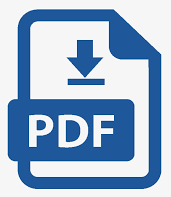Rhodococcus equi como causa de neumonía en el síndrome de inmunodeficiencia adquirida
Palabras clave:
Rhodococcus equi, infecciones por VIH, neumonía bacteriana.Resumen
Rhodococcus equi es un microorganismo emergente asociado a infecciones oportunistas en individuos inmunocomprometidos, especialmente en pacientes con infección por virus de inmunodeficiencia humana. Se desarrolló una búsqueda en la Biblioteca Virtual de Infomed, fueron revisados 215 trabajos científicos sin limitación de año y país, seleccionándose 55. El rhodococcus es un patógeno intracelular capaz de crecer y persistir dentro de los macrófagos que expresan en su superficie el receptor Mac-1 (CD11b/CC18), y posteriormente destruirlos. La manifestación clínica más frecuente es la neumonía de comienzo insidioso y en su evolución natural tiende a la cavitación. El diagnóstico se realiza mediante su identificación en cultivo de muestras de tejido afectado. Los hemocultivos son positivos en el 50% de los inmunodeprimidos En el diagnóstico radiográfico, los hallazgos más comunes referidos en la literatura científica son el compromiso lobar y la cavitación. La particular evolución que experimentan los pacientes con síndrome de inmunodeficiencia adquirida y neumonía por R. equi, obliga a implementar esquemas terapéuticos basados en antimicrobianos con actividad bactericida intracelular, administrados inicialmente por vía intravenosa y durante un tiempo prolongado e incluso la cirugía. La infección por R. equi es una complicación infrecuente en pacientes con síndrome de inmunodeficiencia adquirida, pero con una elevada tasa de letalidad, por lo que debe ser sospechado en pacientes que presenten una infección respiratoria de curso inhabitual. El diagnóstico precoz, el tratamiento antimicrobiano combinado y prolongado y el inicio de la Terapia Antiretroviral de Gran Actividad en forma temprana pueden mejorar la evolución y el pronóstico de estos pacientes.
Descargas
Publicado
Cómo citar
Número
Sección
Licencia
La misma permite:
• Copiar y redistribuir el material publicado en cualquier medio o formato.
• Adaptar el contenido.
Esto se realizará bajo los siguientes términos:
• Atribuir los créditos de los autores e indicar si se realizaron cambios, en cuyo caso debe ser de forma razonable.
• Uso no comercial.
• Reconocer la revista donde se publica.
Se mantienen los derechos de autoría de cada artículo, sin restricciones.






